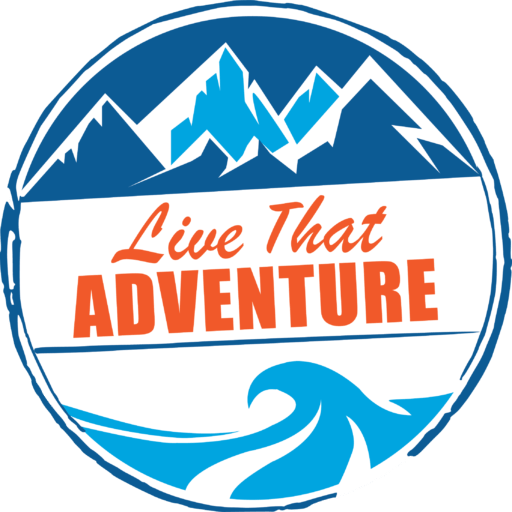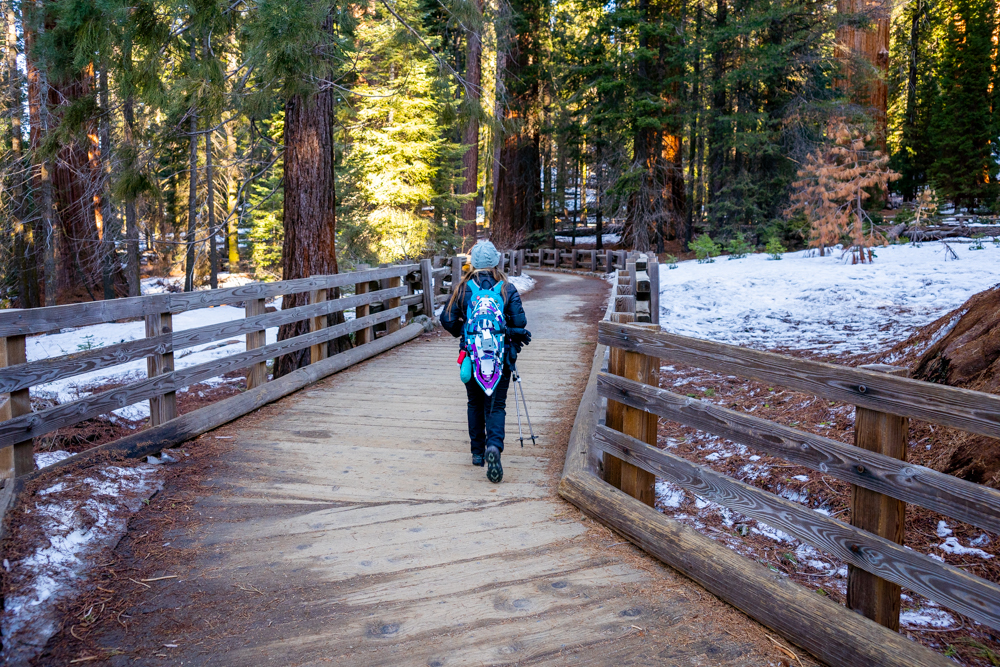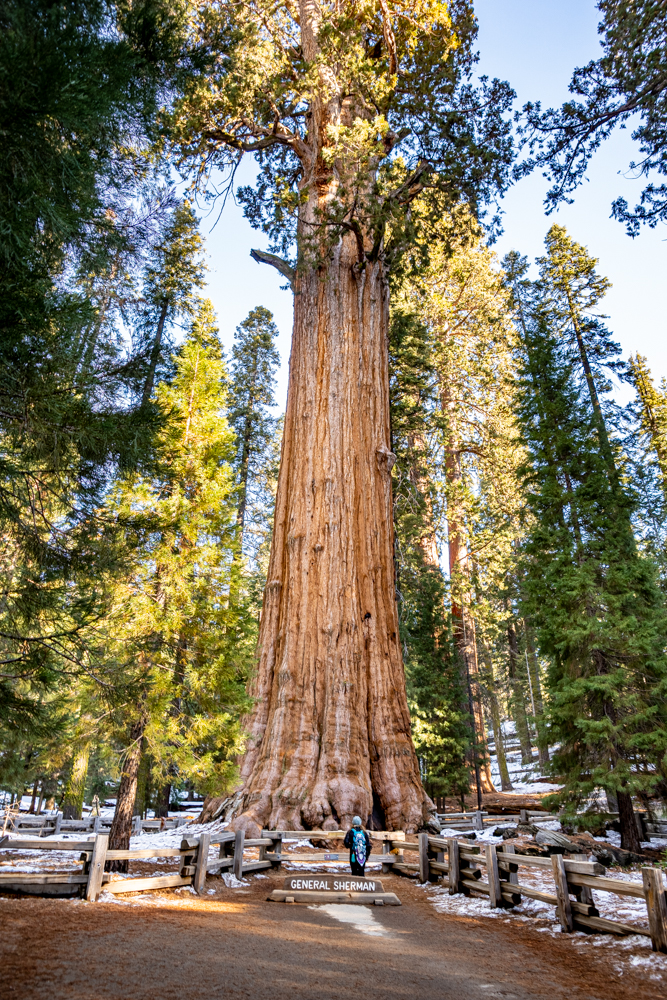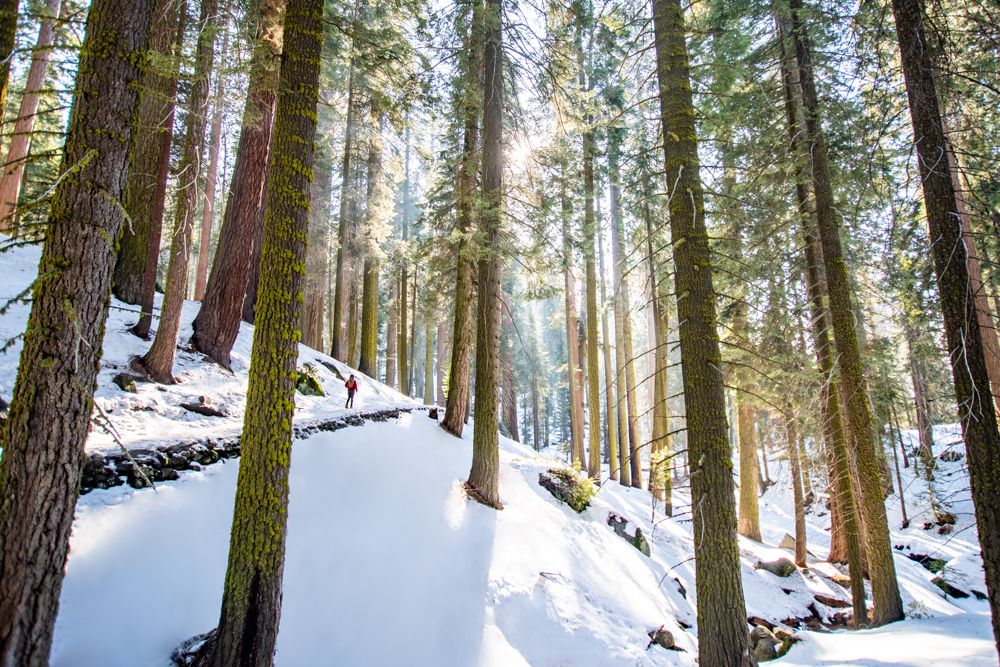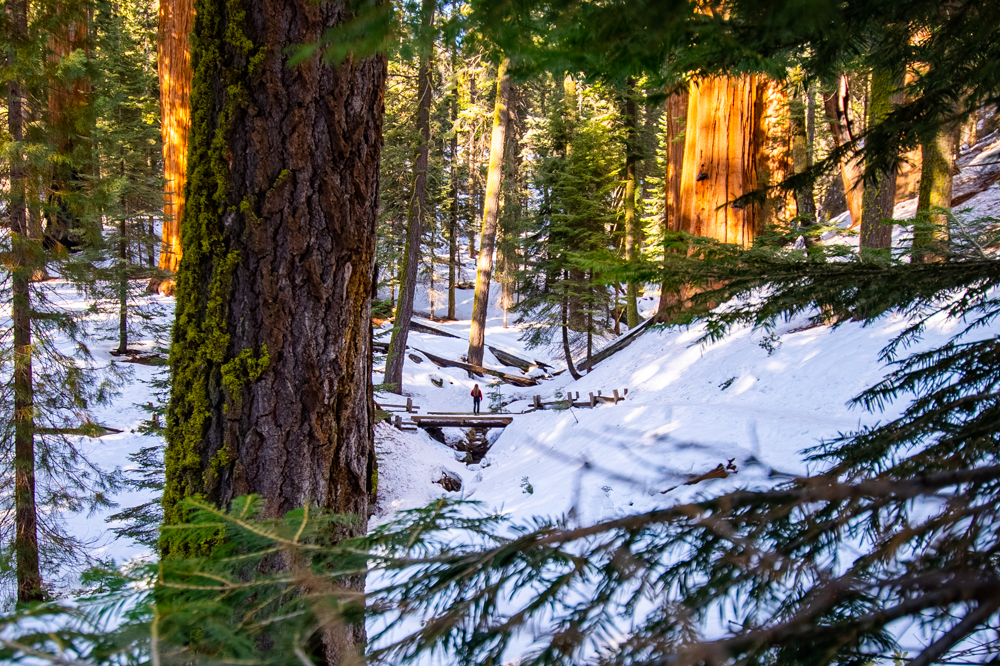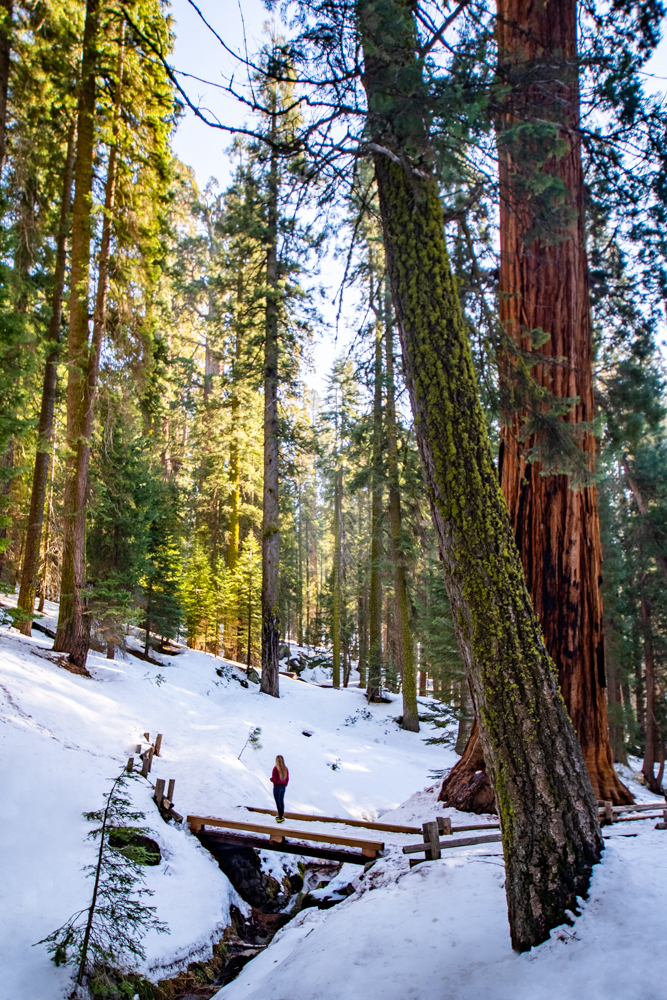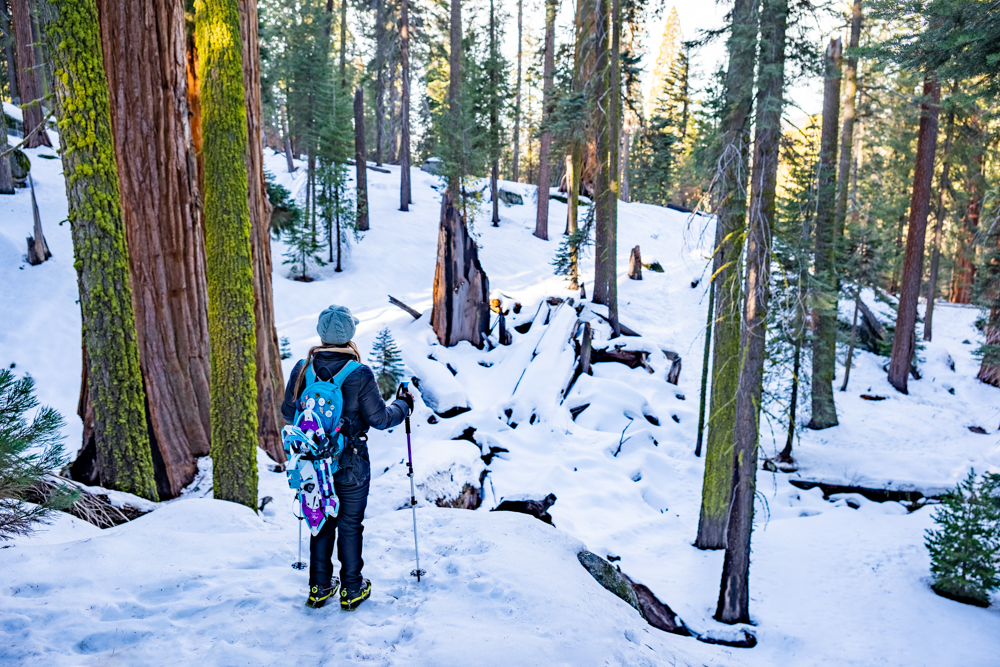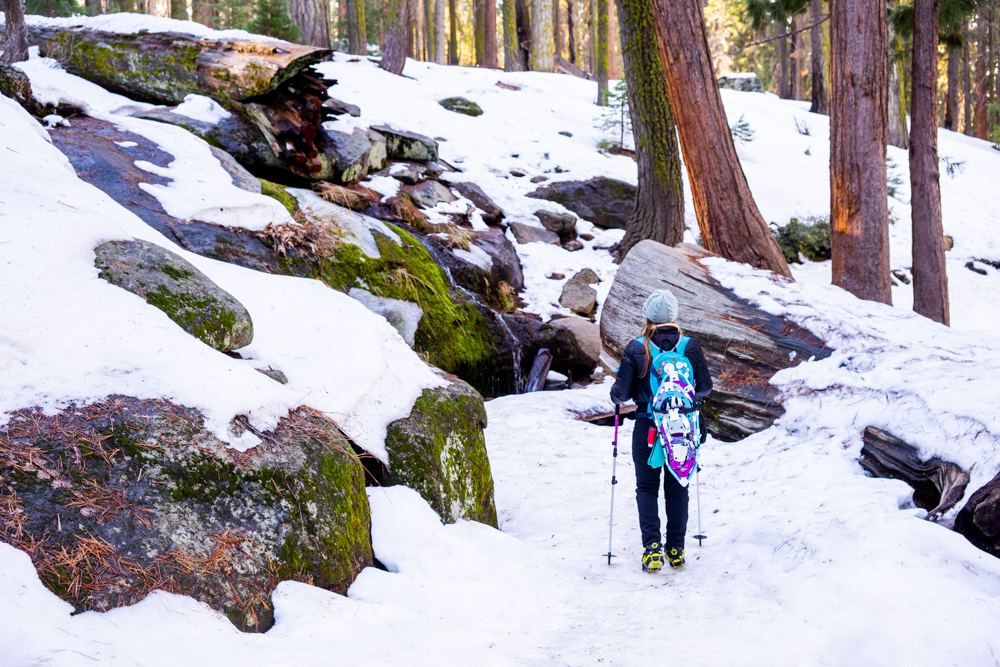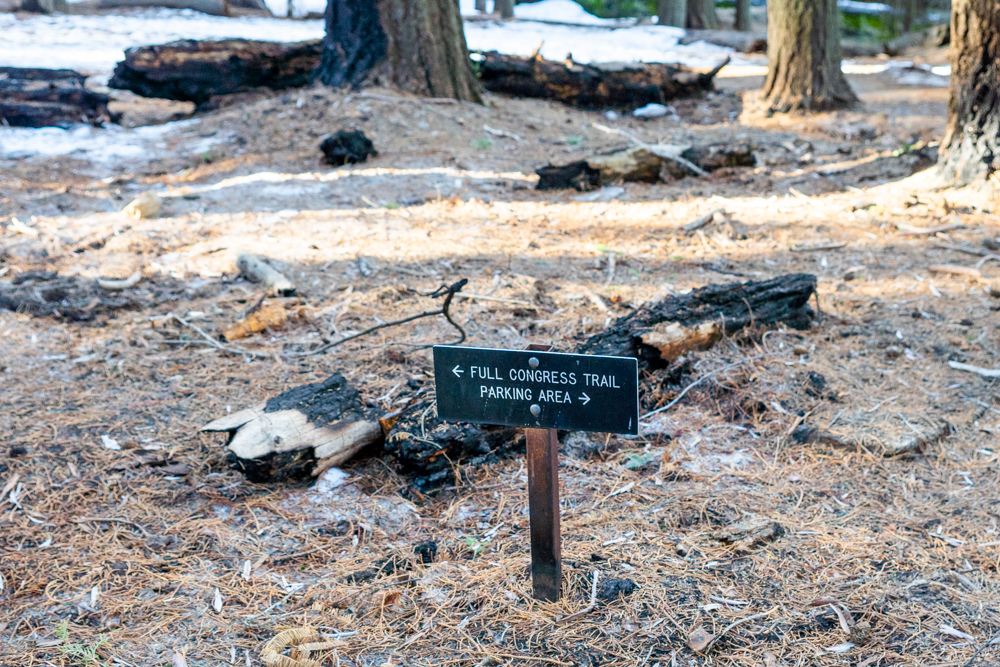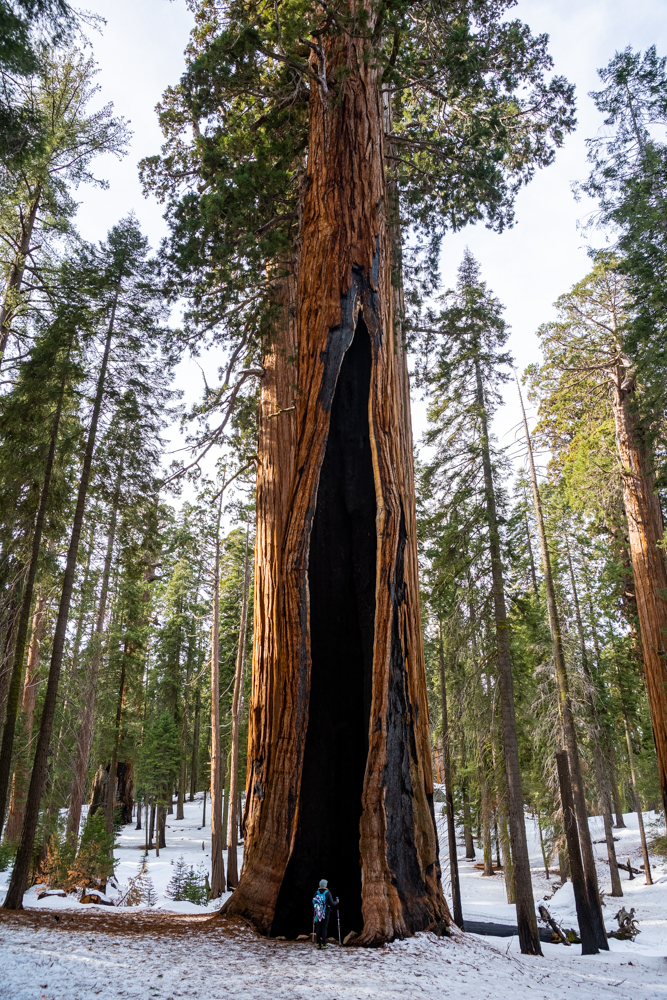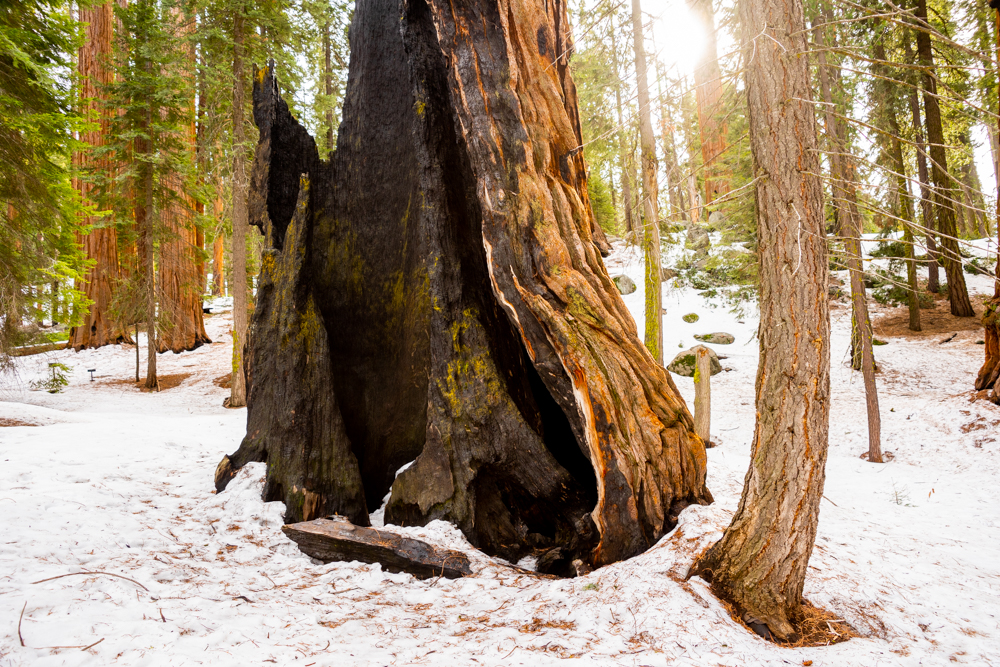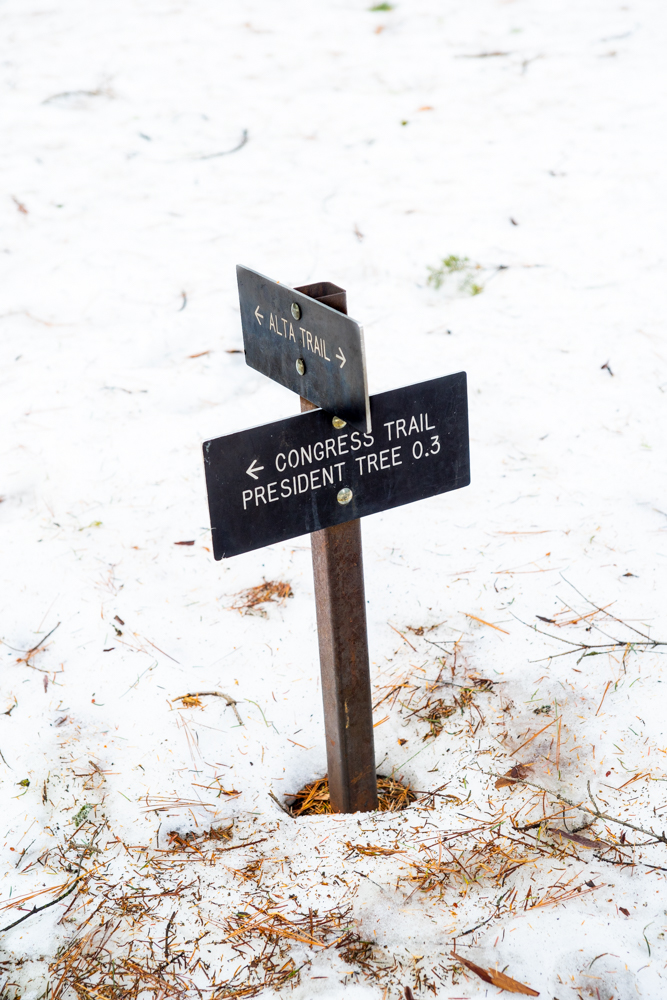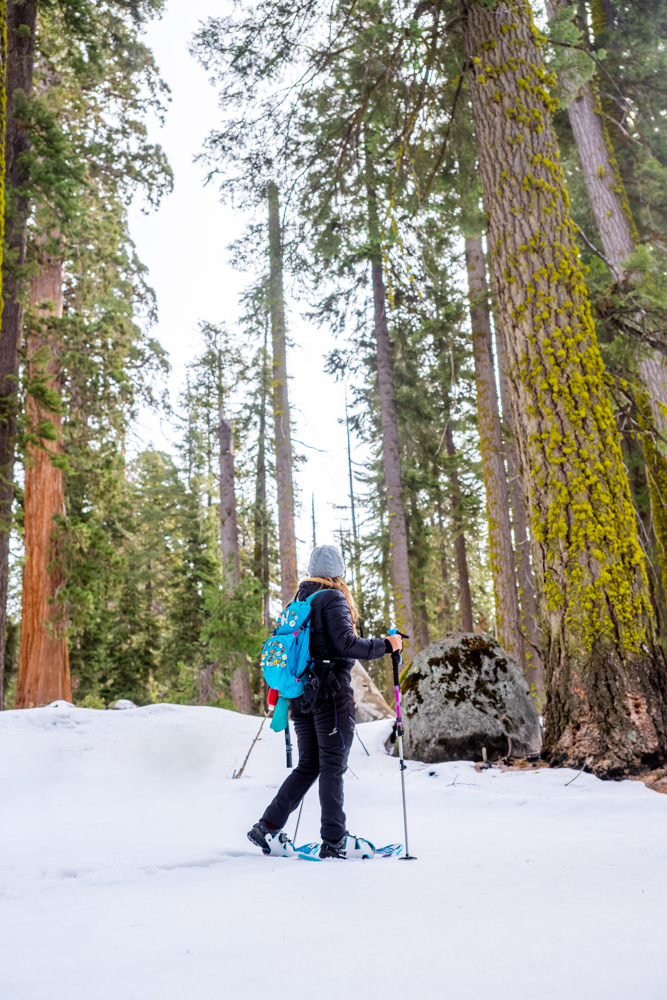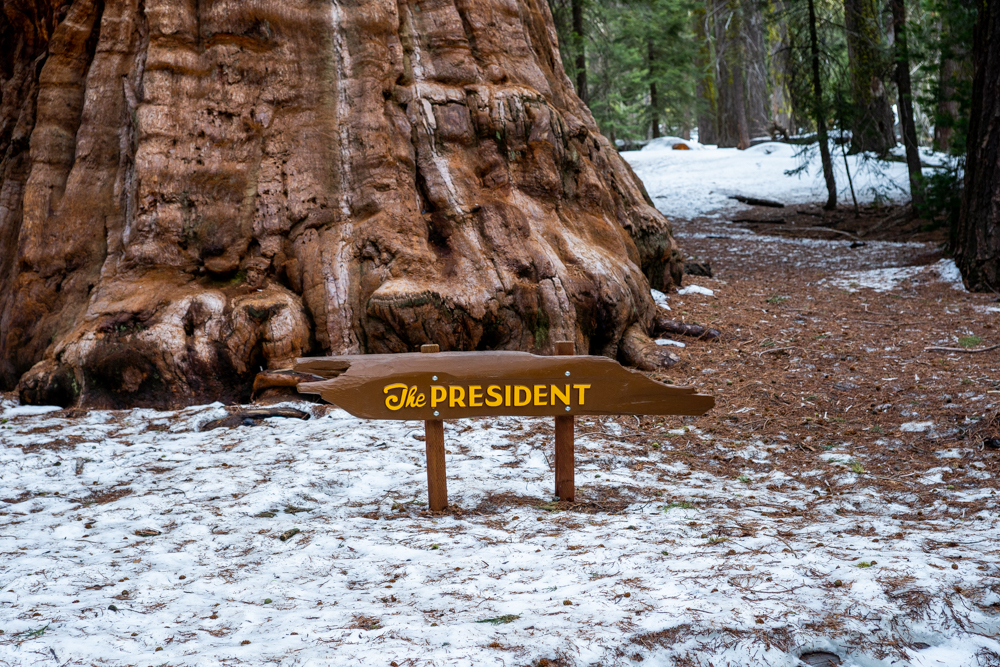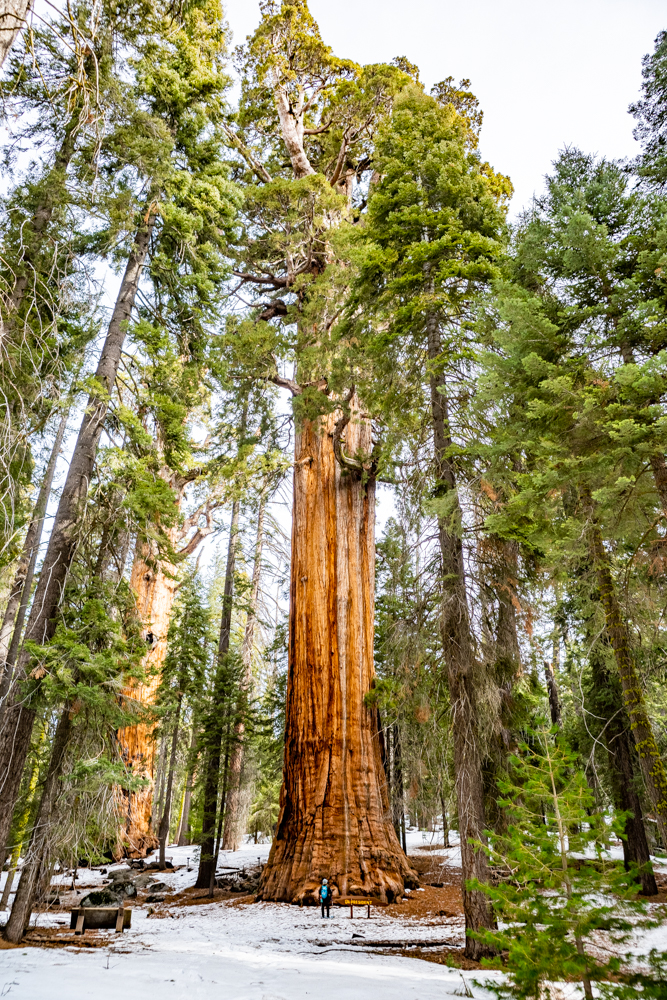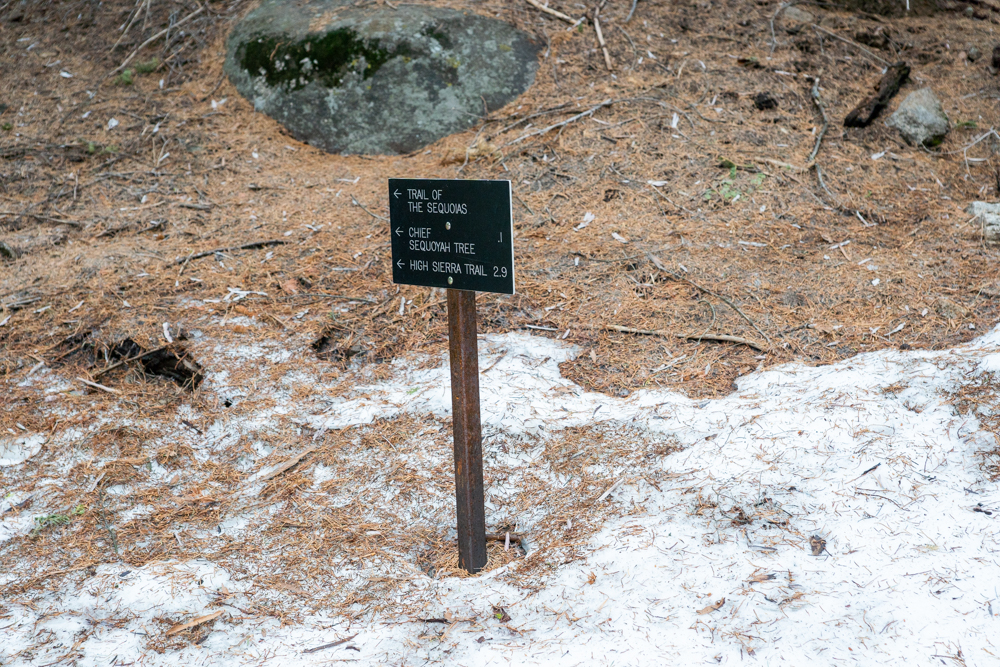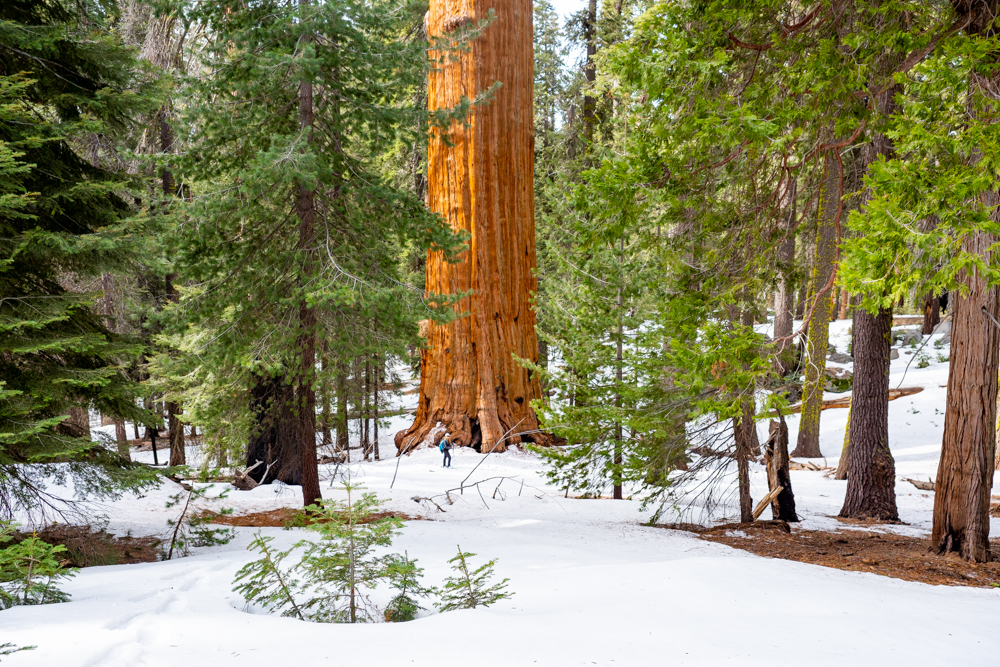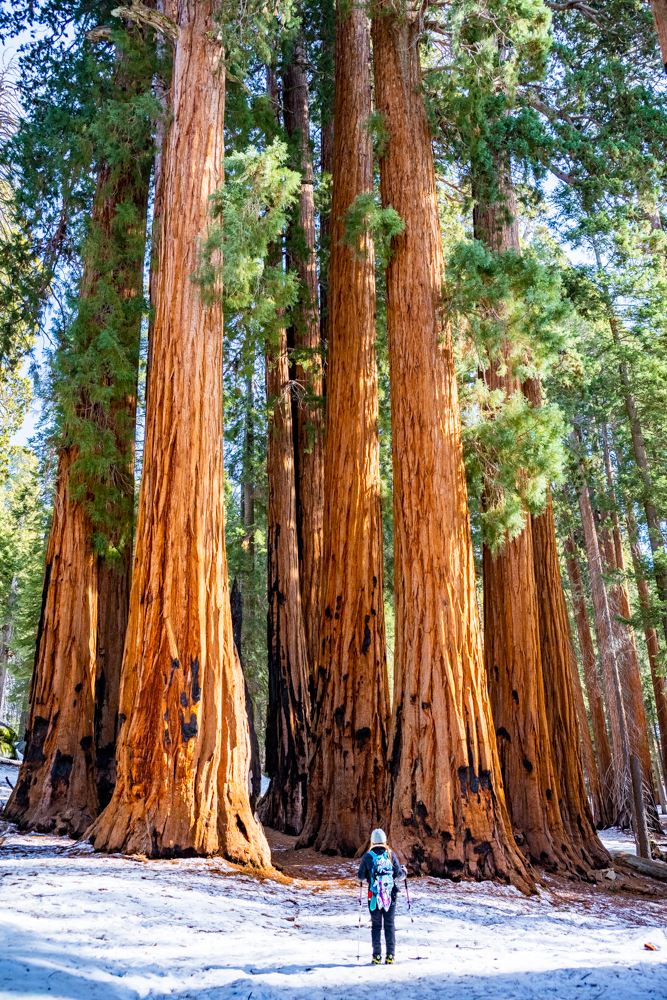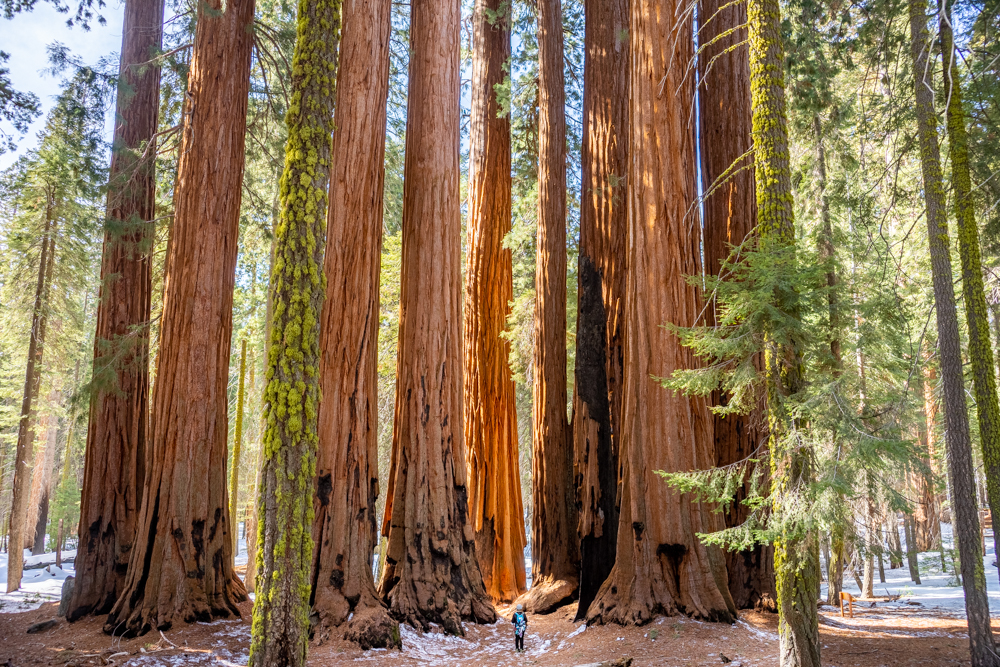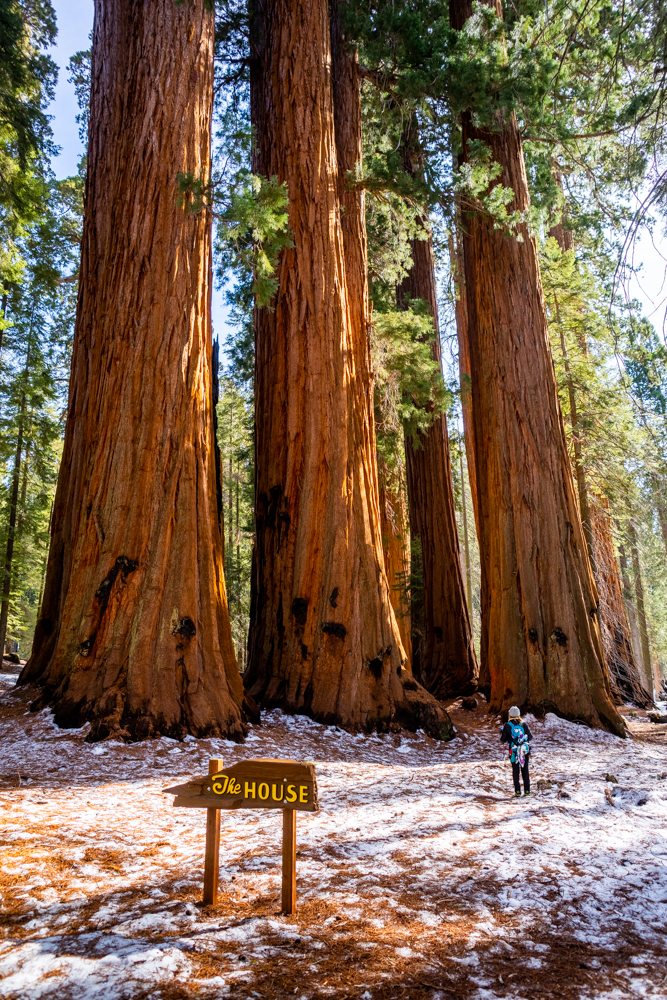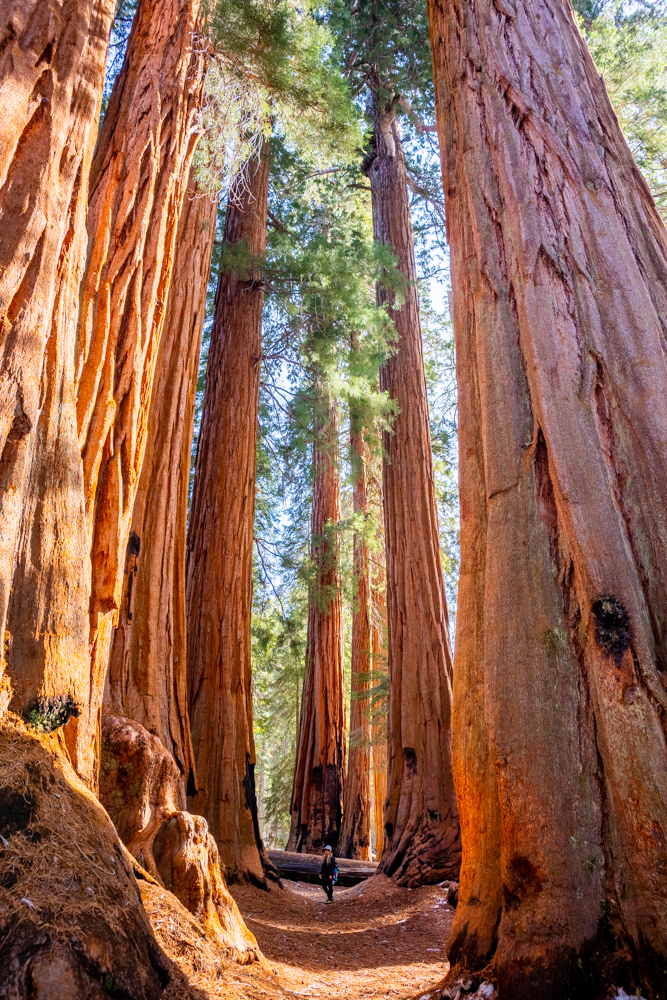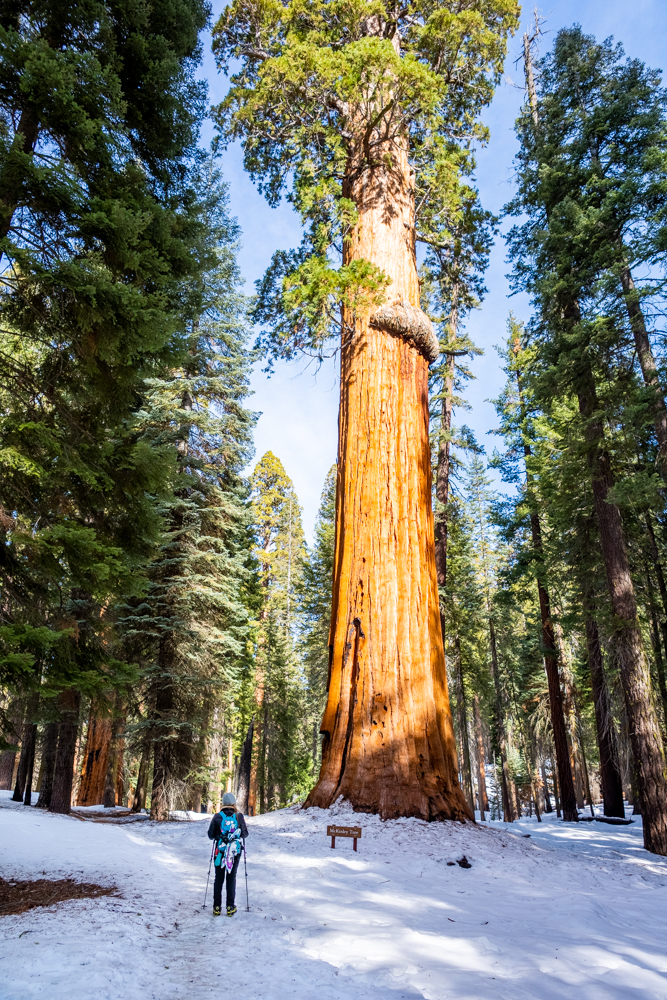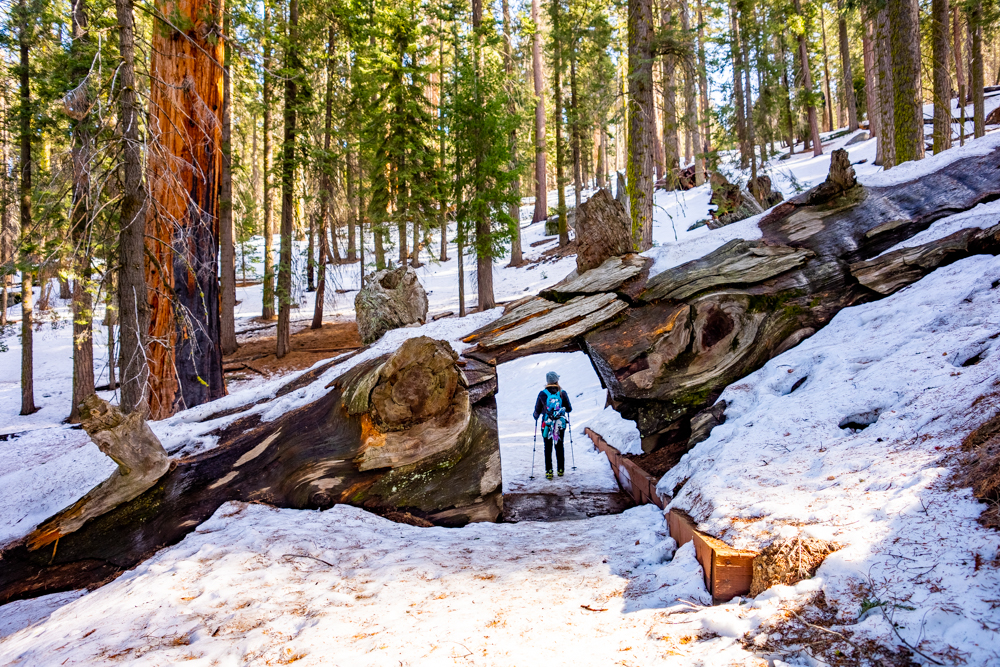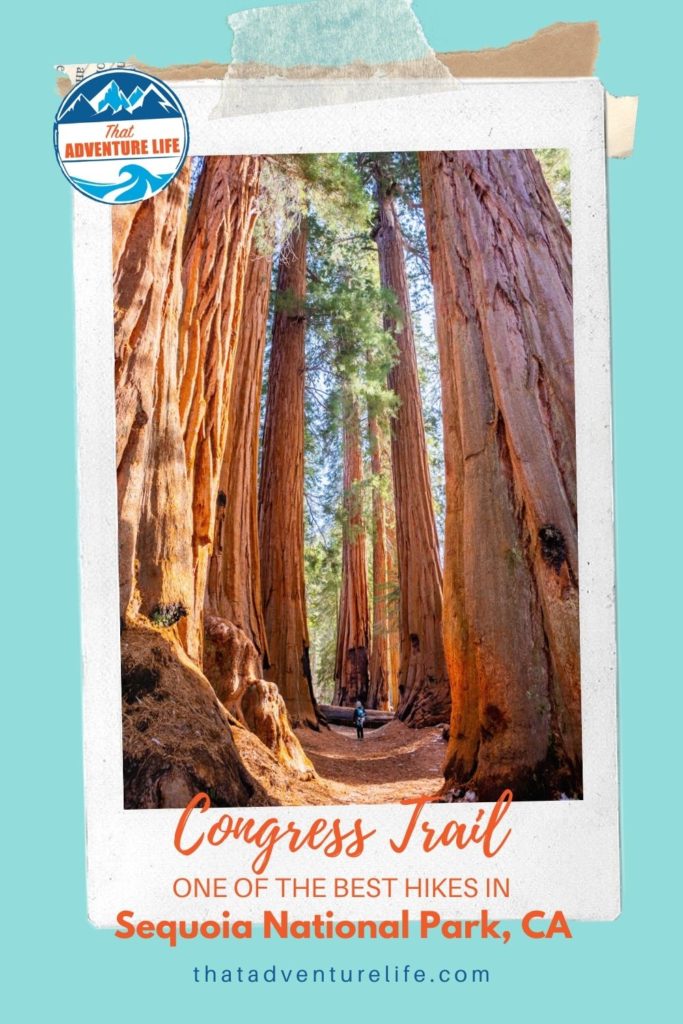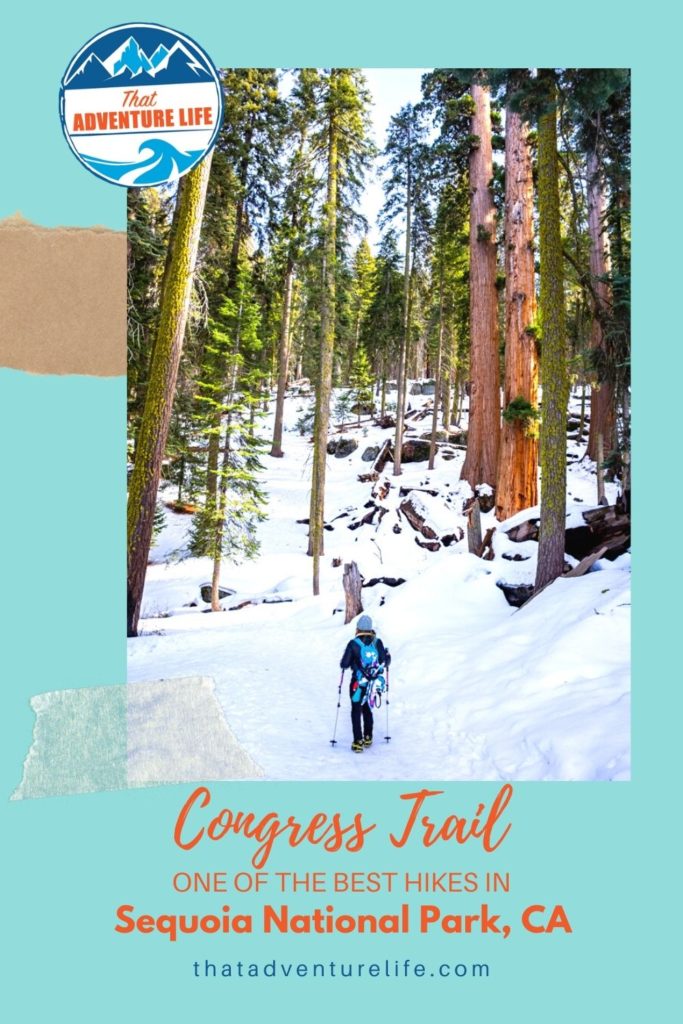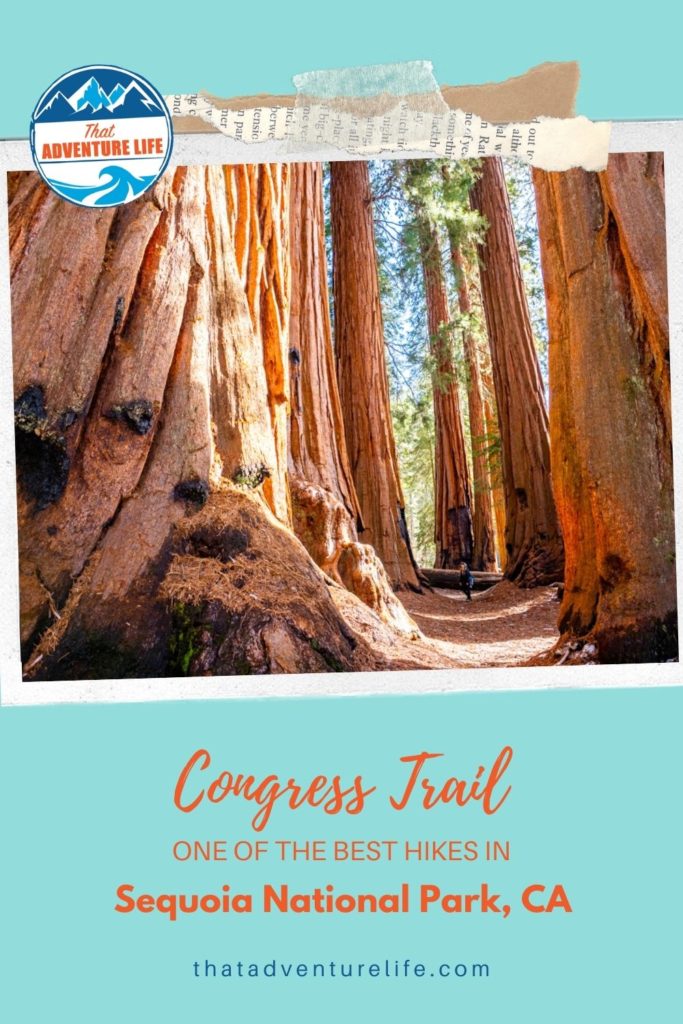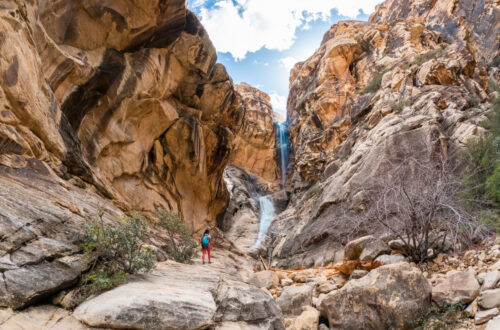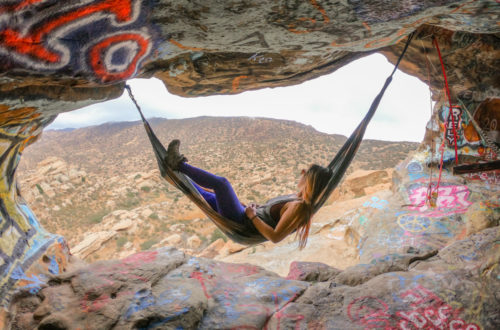Every time we have visited Sequoia National Park in the past, it’s always been during the Summer. This time around, we wanted to check it out in the winter, especially since we recently got into snowshoeing. We know this park is beautiful but little did we know that it would be even more breathtaking seeing the giant red sequoia trees against the pristine white snow. This gorgeous scenery becomes more vivid on Congress Trail.
Congress Trail is pretty much what Sequoia National Park is about. Because it is tucked away in the corner of General Sherman trail, not a lot of people seem to attempt this hike, and if they do, not many go all the way, especially during the winters. So, not only will you get that much-needed solitude, but you will also get to immerse yourself between the clusters of giant sequoias. Congress Trail is one of our favorite hikes in this park.
STATS:
Where:
Congress Trail trailhead:
Coords: 36°34’51.7″N 118°45’01.0″W
Parking:
Parking for Congress Trail is the same as General Sherman trail.
Winter Parking or Disable Parking in the Summer:
Coords: 36°34’48.5″N 118°45’06.5″W
Main Parking:
Coords: 36°35’06.1″N 118°44’57.1″W
Fee:
Sequoia National Park charges a fee to enter. Fees are $35 per vehicle or $30 per motorcycle. If you are entering on foot or bike the fee is $20 per person. You can also either purchase a park-specific annual pass for $70 or get an America the Beautiful National Parks pass for $80. For up to date fee info, click here.
Parking:
The parking for Congress Trail is the same as General Sherman trail. In the winter, you can park at a small, limited space parking, right off CA-198.
In the summer, that small parking space is reserved for people with disabilities. There is a much bigger parking lot down the road. You do have to take Wolverton Road to get there. Parking here will extend your hike by about 0.44 miles.
Restrooms:
There are restrooms at both parking lots
Distance:
Congress Trail itself is about 3 miles. Depending on where you park and what route you take, your mileage will change.
- From the main parking lot, it is 0.44 miles to the Congress Trail trailhead.
- From the smaller parking lot, if you go right, it will be 0.12 miles, if you go left, you will get to visit General Sherman and it will be 0.24 miles.
Elevation Gain:
495 ft
Level:
Easy to moderate. There are some steeper sections. If you do this hike in the winter, it is definitely a harder.
Estimated Completion Time:
2-3 hours
Ideal Weather:
You can do this trail year-round. And it is beautiful year-round. Spring will give you beautiful wildflowers. Summer will be best if you prefer a nice walk. Fall will give you the best weather. However, extreme as it sounds, we prefer a winter hike here, especially during the recent snow. It is so magical seeing these giant redwoods against the bed of white snow.
Ideal Time:
If you go during the Summer, go early. It can get crowded and warm. For winter hikes, I would go in the morning still, which will give you enough sunlight to find your way back.
Pet-friendly:
Pet are not allowed on ALL trails in the Sequoia National Park.
Weather:
Note: This trail is not wheelchair or stroller accessible.
VIDEO:
THE DRIVE
The small parking lot is pretty much right off the side of CA-98. There are signs to inform you before your approach.
For the main parking lot, if you’re coming from the Three Rivers direction, you’ll want to turn right onto Wolverton Rd which is about 0.6 miles past the small parking lot. Follow Wolverton for another 0.6 miles, follow the sign for General Sherman parking lot, and make a right. Stay on this road for 0.7 miles and you will arrive at the main parking lot.

THE ADVENTURE:
First Section: Getting to Congress Trail trailhead
Congress Trail trailhead is not the easiest to find. This is because it is tucked away in the corner of one of the park’s most popular attractions popular attraction: General Sherman, the world’s largest tree, measured by volume. To get here, there are 3 different routes. They are mostly paved. The first route is mainly what you will take during the busier seasons. This is from the main parking lot. It is a nice, easy paved trail with multiple stair sections. This route is 0.44 miles.
The second route and the third one start at the same smaller parking lot, the one right off CA-198. You can use this route in the winter because parking will be available. This is a loop trail around General Sherman. If you go right, you’ll miss General Sherman, but your walk will be shorter to 0.12 miles.
If you going left, it is the longer way around, however, you will get to see General Sherman, a bonus stop before getting to Congress Trail trailhead. In the winter, you might not have a choice, depending on if sections of the trail will be closing down or not. If you’re going left, after passing General Sherman, keep going past the first turn, you’ll see the information kiosk on the left. The trailhead is directly opposite from the kiosk. There should be a small sign in front of the trailhead.
We recommend making a detour to see General Sherman. Even though it can get quite crowded, it is definitely awe-inspiring to be standing next to the world’s largest tree. The trail around General Sherman is always beautiful. It is an excellent introduction to the Congress trail.
The Start of Congress Trail
The area surrounding the beginning of Congress Trail is quite beautiful. You’ll get the giant Sequoias mixed in with moss-covered tall pine trees. Soon after you get on the trail, you’ll cross over your first creek crossing. Once you cross over the creek, the moss-covered pine trees seem to take over the scenery. It is quite beautiful in the winter mornings, as the sunlight peeks through the dense forest. The green of the moss becomes extra vibrant against the white snow. The landscape here becomes a winter wonderland in the snowfall. It was so beautiful we almost forgot that it was quite cold.
Before you attempt this hike or any hike in the park in the winter, always make sure to bring waterproof shoes, shoe traction devices, and if you can, trekking poles. These will help you avoid slips and falls on icy trails.
Also, in the summer, the trail is easy to follow and mostly paved. However, in the winter, when there is a lot of snow, the trail disappears. If you’re one of the few people doing this hike right after a big snowfall, bring your GPS tracker with you. You can also use a winter trail map and follow blazes, or yellow trail markers attached to trees along winter trails. If you’re going after more people have done it, try to follow the path. This area can get quite disorienting in the snow.
As you keep going, the forest becomes more interesting, with more giant sequoias. I don’t remember 100 percent but I’m quite sure there is super cool looking, huge burned sequoia. If you pay attention, there are a few like that on this trail. They are pretty amazing because, despite all the burned areas, and all of the adversity, they are still thriving. If you’re hiking in the winter, watch out for icy patches, especially after the snow melts and refreezes.
About 0.7 miles, you’ll reach a barely visible and unpaved Alta trail on the left. You can see the General Lee tree nearby. About 0.1 miles past Alta trail, there is a short cut to the other side of the loop, if you want to cut this hike short. However, I recommend doing the full Congress Trail, because from here to the McKinley Tree, you’ll pass through all the best parts of this hike.
Best Part of the Trail: From Alta Trail to McKinley Tree
This 0.5 miles hike is packed full of beauty. The first 0.2 miles will take you through the enormous President Tree and Chief Sequoyah Tree. President sequoia is the 4th largest giant sequoia in the world. Even though they are not as big as General Sherman, their scales are still very much impressive. Don’t forget to take that detour to visit these incredible trees.
Soon after, you’ll reach the Senate. The Senate is a group of 6 slightly smaller trees. However, seeing them all together is very impressive. About 0.3 miles down the road, you’ll run into another giant sequoia clusters. This one is called the House. We can’t make up our mind which cluster is better, the House or the Senate. They are both incredible. Make sure to spend some time walking among these giants. It is a surreal feeling, being in the middle of Mother Nature’s handiwork. Don’t forget to explore the surrounding area here. Be careful if you’re snowshoeing. In some areas where the snow is on top of the tree branches or next to the fallen trees, if you step on it, the snow can collapse and your foot could get stuck. We are speaking from experience. From the House, it is another 0.1 miles to the McKinley tree.
The Rest of the Trail
Near the McKinley tree, there is a 4-way junction with a few unpaved paths. Follow the sign for Congress Trail (go right). From here, it is about 0.6 miles to get back onto General Sherman trail. This section will take you through a mostly pine forest with a few sequoias dotted throughout. You also pass by a few creeks, cross under a tree tunnel and another bridge before heading back to the General Sherman trail. From here, follow the trail back to wherever you park at. Be careful when crossing under the tree tunnel when there’s snow. It can get VERY slippery under there. Vy slipped and hit her head when she wasn’t paying attention. Luckily she’s fine.
While you’re in Sequoia, don’t forget to check out Moro Rock, it is a beautiful hike to the top of this giant monolith. If you’re visiting in the winter, you can snowshoe to Moro Rock and Tunnel Log. It is super fun!
Happy Adventuring. Don’t forget to follow us on Instagram, subscribe to our Youtube channel, and sign up for our newsletter!
RECOMMEND GEAR:
These are the gear that we personally use and find helpful for this particular adventure. Don’t forget to check out our Recommended Gear section as well.
The majority of these links are through our affiliate links so if you buy something, it is at no extra cost for you but it helps us support the site. That being said, don’t buy something just to support us, buy something if you think it will enhance your travels and adventures.
• Hiking shoes
Wear good hiking shoes, especially if you want to explore the area around. Vy’s shoes are Merrell Women’s Moab 2 Mid Waterproof Hiking Boot. Dustin’s shoes are TARGHEE III WATERPROOF.
• Snacks/Lunch
Always bring snacks with you! This trail has some beautiful areas for a quick lunch too!
• Sunscreen
The trail can get very warm. Bring sunscreen! We use eco-friendly, reef-safe sunscreen, All Good Organic Sunscreen Butter – Zinc Oxide – Coral Reef Safe, and All Good Sport Sunscreen Lotion – Coral Reef Safe (3 oz)(2-Pack) or Stream2Sea SPF 30 Reef Safe Sport Tinted Sunscreen.
• Water
Doesn’t matter when you go, always make sure to bring plenty of water. Especially if you go in the afternoon. Vy uses the Camelback L.U.X.E. Dustin uses the Clik Small pack (sadly Clik is no longer around). Patagonia Women’s Nine Trails Pack 18L is also a great backpack for a shorter hike like this.
• Jacket
Depends on when you’re going, you’ll need a jacket. For colder winter days, I use my snowboarding jacket. Dustin doesn’t get cold so he uses his packable Patagonia Puff Jacket. You can get the female version here. For warmer days, we love the packable Patagonia Women’s Houdini® Jacket and Patagonia Men’s Houdini® Jacket
• Headlights
Bring headlights with you to do this hike in the winter. The weather condition can change rapidly. We use Black Diamond Cosmo.
• Snowshoes and/or microspikes
If you attempting this hike in the winter, you will need snowshoes and/or microspikes, depending on the trail condition. If it has fresh snow, you will need your snowshoes. Microspikes are best when the trail is more packed down. We ended up using both the last time we were there.
• Layered clothing
This is for hiking in the winter. You will need warm clothes. We recommend layering. Dustin uses Patagonia Men’s Capilene® Thermal Weight Zip-Neck Hoody and Patagonia Men’s Capilene® Thermal Weight Zip-Neck Hoody. Vy uses Patagonia Women’s Capilene® Thermal Weight Crew and Patagonia Women’s Capilene® Thermal Weight Bottoms as base layers.
CAMERA GEAR:
• Camera:
Sony a7 III
Gopro Hero 7 Black
• Lenses:
Sony 24 -70mm f/2.8 Carl Zeiss Vario Sonnar T Zoom Lens
• Accessories:
GoPro The Handler Floating Hand Grip – Official GoPro Mount
Aluminum GoPro protection frame
SandMarc Extended GoPro Pole
Hybrid Pro Filters – DSLR / Mirrorless
Cinema CPL Filter – HERO 9
